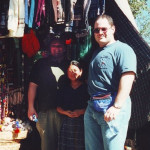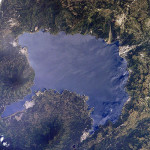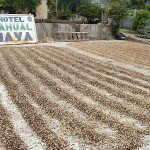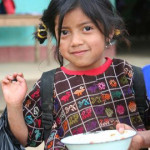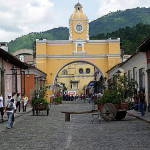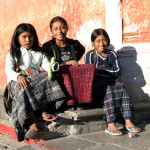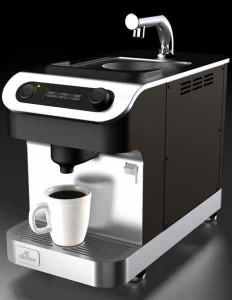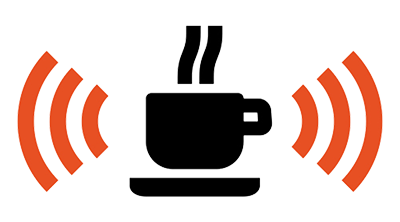The Palenque Coffee House Story
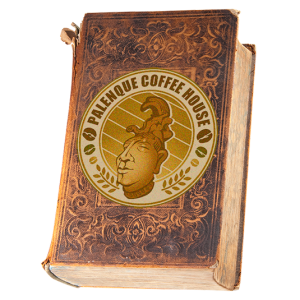 In the spring of 2001, a 27 year old student walked into the baggage claim area at Miami International Airport. In his duffel bag were 8 kilograms of a plant based substance, well known to have stimulant properties.
In the spring of 2001, a 27 year old student walked into the baggage claim area at Miami International Airport. In his duffel bag were 8 kilograms of a plant based substance, well known to have stimulant properties.
The dark sunglasses along with his departure point of Central America had piqued the interest of several customs agents. Within 30 seconds of pulling his luggage off of the carousel, a small beagle with a cold wet nose was sifting through a rip in the canvas and into a pile of dirty socks and t-shirts. Taking its head out of the bag, the beagle performed a final whiff test, looked at its handler indifferently and promptly moved on to the next traveler to repeat the same process. With his heart pounding and a shirt soaked with perspiration, the student gave a big sigh of relief and met his ride downstairs in the passenger arrival terminal.
“How was your trip?” asked the driver.
“It was a close call,” replied the student. “I was afraid the customs agents were going to find all my bags of coffee and open them up. They would have gone stale in a week, and I would have been out of the best coffee I’ve ever had!”
. . .
Eleven years later, I remember that episode with great clarity. I gave away several bags of my favorite Guatemalan coffee to friends and family whom I thought could appreciate the crisp taste with citrus overtones and just the right amount of acidity. The remaining beans I ground up for myself and enjoyed over the next seven days in my Mr. Coffee drip machine. Oh, how I wish I knew about the French Press at the time! That would have been the perfect complement to my trip to historic Antigua and the beautiful region of Lake Atitlan.
I had traveled to the region on my second of what was to be three medical missions in the villages surrounding the Guatemalan lake. Having never laid eyes on such a wondrous natural formation, I had been entranced by how breathtaking the scenery was. Three towering volcanic peaks kept watch over a crystal clear lake, known to be the deepest in Central America.
Sitting on the lakeside dock and looking out past the horizon on a cold morning, one could see steam and hot gasses escaping from at least one of the peaks rising into the air. The caldera which formed as a result of the local volcanic activity gave rise to this most beautiful of places. Of the three volcanoes in the region, the last eruption occurred in 1853, and it is believed that at least one of the peaks is still active. It is this volcanic activity, however, which has lent itself to so perfect a climate, soil, and altitude with which to nurture a coffee plant like no other.
Nowadays, most patrons of local coffee houses and large franchises never really get to experience the full story behind the beans used to make the Macchiato or Lattes that have become part of their morning ritual and social scene. I was one of those people. In fact, I would take that a step farther and freely admit that until my times spent amongst the local population of Atitlan, I thought coffee was supposed to be enjoyed as a pre-ground, vacuum sealed brick – sitting on the shelves in the grocery store. If not that, then certainly a freeze-dried version that could be made instantly. What did it matter that it was made of the lower quality Robusta variety bean, with a bitter taste and a shelf life to last until the next ice age?
- Brad Eisenberg with Guatemalan friends
- Guatemala’s Lago de Atitlan, viewed from space
- A Guatemalan coffee field
- A young Guatemalan girl
- Antigua, Guatemala
- Young girls in Antigua, Guatemala
Today I know it matters. Having watched the coffee growers of the region – to see the harvesting of coffee cherries on the volcanic cliffs, to watch as the growers dry the beans in the sun’s basking light, and to smell the aroma of those same coffee beans as they are fresh roasted as soon as they are done drying . . . well, what could be better than that? Why — to have it the same day for breakfast and after the evening meal!
Since then, coffee has never been the same for me. It is this experience which I want to share with you, the customers and coffee connoisseurs of Palenque Coffee House. Our goal is not just to educate, but to pass on the passion for the drink, the region, the culture, and the peoples which have so captivated my life.
It is to the Mayan people and their descendants to which I owe the naming of our coffee house. The ancient ruins of Tikal, markets of Antigua, and natural beauty of the land compelled me to tell the story of the region – and it is to the wonderful people of the villages of San Antonio Palopó and Santa Catarina Palopó that I credit our beginnings.
– Brad Eisenberg



